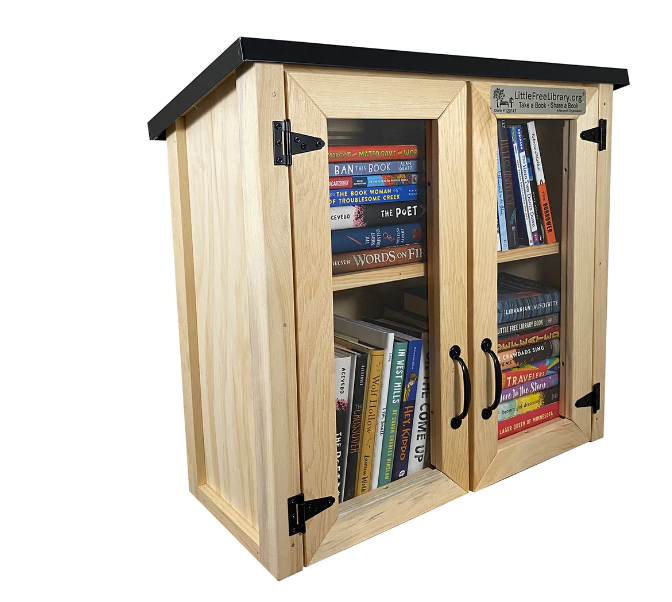Carol Johnson, Southern Indiana Business Report
BEDFORD – The city of Bedford is one of five Indiana communities awarded early action grants by the Indiana Arts Commission to enhance their communities through art.
Bedford, along with Dillsboro, Monticello, Valparaiso and Warsaw are receiving grant funding through phase two of the pilot program Creative Convergence, which was offered this spring in partnership with the Indiana Communities Institute at Ball State University.
The purpose of the grants is to “implement creative community development projects designed to enhance quality of life and grow local economies,” according to a news release from the IAC.
Bedford will address a lack of opportunity for residents of all ages and backgrounds to experience visual arts in their community by repurposing Little Free Libraries as little free art galleries and installing a permanent public art exhibit case downtown. The city will also plan and offer free art classes to cultivate and deepen interest in the arts.
Ashlynne Bender, director of business and community development for the city, attended a two-day IAC workshop where participants learned that leveraging the creative sector of the community can improve quality of life for everyone.
Little free art galleries
With the grant funds, the city will purchase new boxes that are larger than the current Little Free Libraries. The art gallery boxes will be placed at Otis Park, Harp Commons, Thornton Park and the community garden.
“They will work just like the Little Free Libraries where you can place or take art,” Bender said. “It doesn’t have to be a newly created piece of art. It can be something you created and no longer want. It might be a crocheted scarf or pot holder, ceramic mug or a key chain.”

Activities that support a community’s arts and culture can also play a role in economic development, Bender said.
By working with local artists and showcasing what they do, it can raise their profile as artists to sell more of their work. The other side of the grant is to enhance Bedford’s quality of place and quality of life, especially as it relates to the expected influx of workers coming to the microelectronics campus at WestGate.
“When these employees are looking for a place to live, they want to know what community resources there are,” she said. “If we can say we offer a place to take art classes or to look at art, that attracts people to us and that contributes to our growth.”
Community art classes
To present the free art classes, Bender will hire local artists. Possible classes include painting, jewelry and crocheting.
“In doing these classes for free, we hope people will place some of the work they created in the little free art galleries,” Bender said.
Also part of the grant project is installing a permanent, interchangeable display case at StoneGate Arts & Education Center in downtown Bedford.
“We want this to be a good representation of all kinds of art and it will showcase a unique facet in our community,” she said.
Any artist, from someone just getting started to professionals, can apply to be featured. The display will change every quarter.
Bringing local artists into the spotlight is another part of the project. Artists will be commissioned to paint the art gallery boxes.
Bender plans to have the boxes ready to be installed in September and have the first free art class scheduled for October.
As a result of the pilot training and grant funding, the five communities will gain experience in how to embed arts and creativity in community and economic planning and development, how to work collaboratively across sectors, and how to effectively engage their community in addressing an identified need or opportunity through an intervention focused on creativity.
Attending the IAC workshop with Bender were Penny May and Michele Hardman, who are members of the local art community, and Linda Henderson, executive director of StoneGate.
About the pilot
The Creative Convergence pilot is an outgrowth of a research study released by ICI in 2022. “Planning with Arts & Culture” examined how Indiana municipalities were using local arts and culture in their community and economic strategies. Key amongst the findings was the expressed need for support in identifying and leveraging the creative sector to improve quality of life for all.
The Indiana Communities Institute brings together top research and outreach activities to assist communities as they strive to improve life experiences for residents, businesses and visitors.
“The involvement of the Indiana Communities Institute was critical to the Creative Convergence pilot.” said Miah Michaelsen, executive director of the IAC. “The ICI is recognized statewide for the quality of their community and economic development training programs, and their partnership was invaluable in ensuring that both the creative sector and Indiana communities had access to the latest in quality of life and local economies research.”



